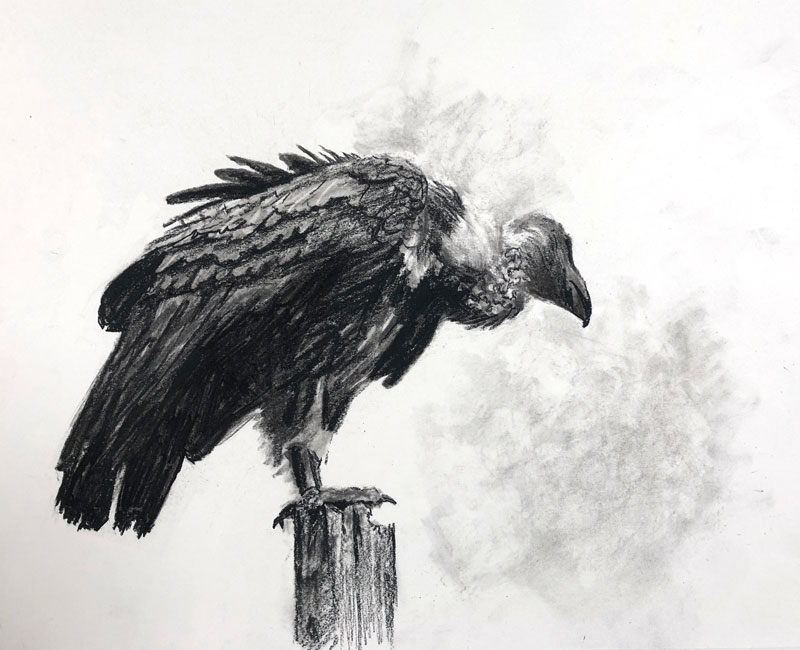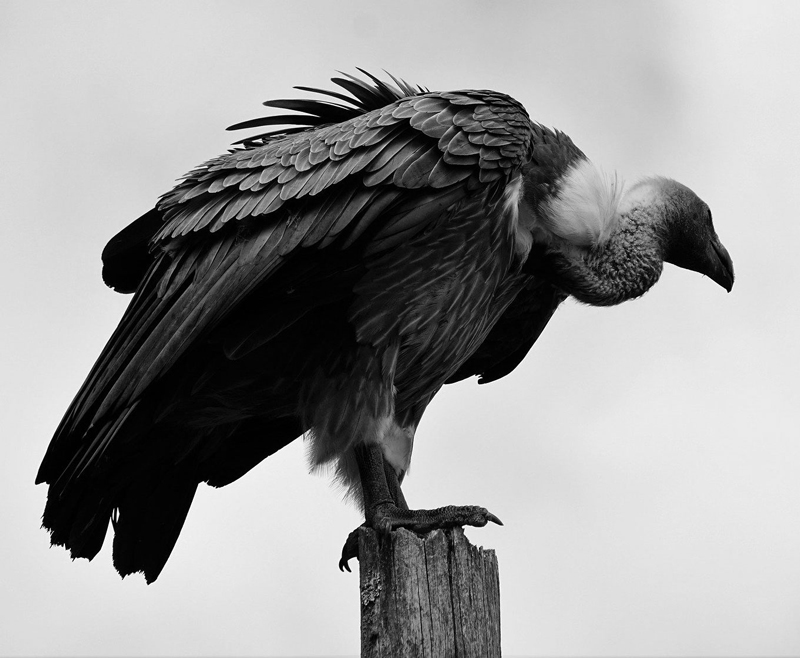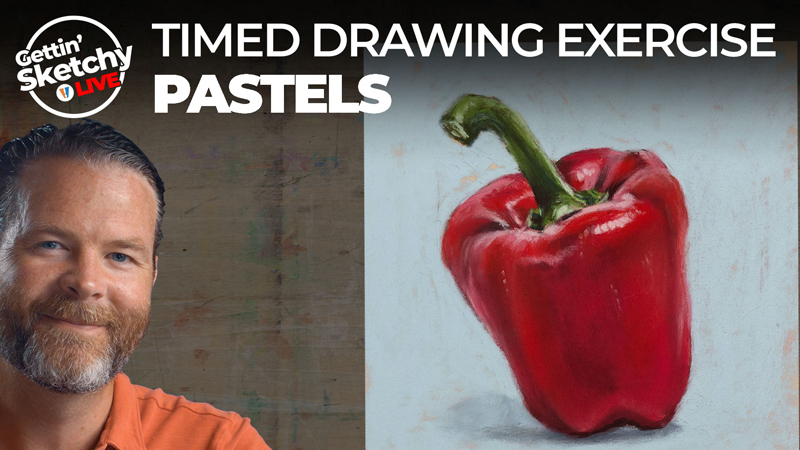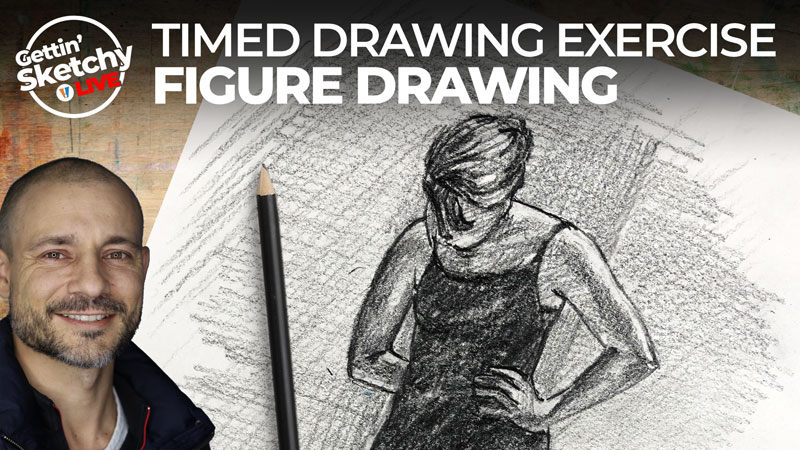Gettin Sketchy – How to Draw a Vulture with Charcoal – Season 2 Episode 6
This episode aired live on YouTube on September 23, 2020.
In this timed drawing exercise, we take a look at drawing a vulture with charcoal. With just 45 minutes allotted for drawing time, every mark counts. In this lesson, we see the versatility of charcoal as a drawing medium and watch an unloved bird turn into a beautiful drawing.
Drawing with Charcoal is Similar to Painting
Compared to other drawing mediums, charcoal is very forgiving. Vine charcoal is easy to erase and manipulate on the surface. Blending is effortless and the rich darkness of charcoal makes it easy to develop a full range of value in a drawing. A full tonal range leads to a more realistic appearance. Charcoal also has a matte finish, unlike graphite which is rather shiny.
Despite these wonderful characteristics, some people avoid working with charcoal and unfortunately miss out on its fantastic qualities. Some folks avoid charcoal due to its powdery consistency which can make it a messy medium to use. For the detailed oriented accustomed to working with a precise pencil or pen tip, charcoal can be frustrating.
This is exactly how Ashley approaches the drawing of a vulture in this drawing exercise.
See also: Charcoal Drawing Techniques
Here’s a look at the completed drawing…

Only after the larger shapes are in place do we see him begin to pull out details. And these details are created through the positioning and relationships of values.
When we see the drawing as a whole, it makes perfect sense to our minds, but if we look closely – the details melt into each other, becoming only shapes of value.
Materials for this Charcoal Drawing
Charcoal is an inexpensive medium to work with. Vine charcoal, compressed charcoal, and charcoal pencils are all affordable and accessible. This drawing is created on regular 80 lb. drawing paper which is also inexpensive and can be purchased at any art store. (The following links are affiliate links which means I make a small commission if you purchase at no additional expense to you.)
Charcoal is at its best when it is both added and removed from the surface. A broad range of value can be developed in a drawing when a kneaded eraser is used.
If you’re interesting in continuing with charcoal, here are a few good places to start…
Photo Reference
The reference photo for this exercise comes from Pixabay.com. Here’s a look at the photo reference…

Drawing is a Skill That Takes Practice to Improve
Many people believe that drawing is a skill that you are born with. They mistakenly assume that it takes talent in order to draw well. Fortunately, drawing is a skill that anyone can learn and develop. It simply requires knowledge and practice to be successful. Like with any skill, the more that you practice, the more you will improve.
For some of us, finding the time to practice is the biggest challenge. A timed drawing exercise like this one can be a solution. If we know that we’re to spend a defined amount of time on our drawing practice, we’re more likely to fit into our busy schedules. Most of us can easily find 45 minutes a day for practice. Having a time constraint also forces us to improve our speed, so there’s more than one benefit.
Draw as much as you can and enjoy the process as you watch your skills improve.
If so, join over 36,000 others that receive our newsletter with new drawing and painting lessons. Plus, check out three of our course videos and ebooks for free.





